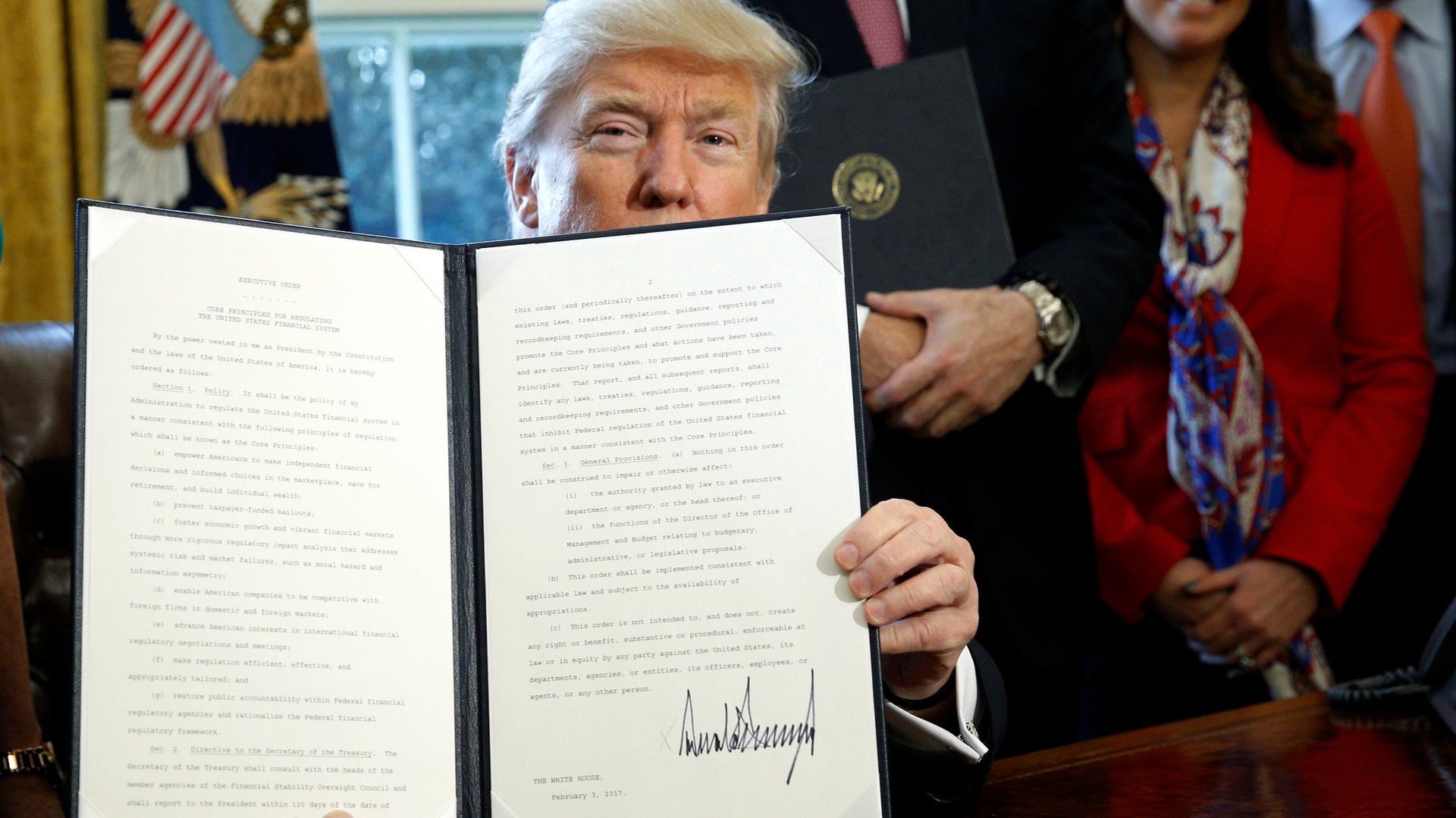Trump may make it easier for IP-rich companies to flee the US
Donald Trump is preparing to make life easier for big banks and investors in multinational companies. The US president will institute a new series of legal reviews during his first trip to the Treasury Department today. The most telling: Treasury secretary Steven Mnuchin will review every tax regulation issued in 2016 to evaluate which should be repealed or modified.


Donald Trump is preparing to make life easier for big banks and investors in multinational companies. The US president will institute a new series of legal reviews during his first trip to the Treasury Department today. The most telling: Treasury secretary Steven Mnuchin will review every tax regulation issued in 2016 to evaluate which should be repealed or modified.
The administration presents the review as a way to make the tax code less complex for American taxpayers, citing the growing list of line items on the individual income-tax form. But the regulations being reviewed suggest the focus will be on lifting the burden on multinational corporations.
Congressional aides with knowledge of the Treasury’s plans say the target is rules that Barack Obama’s administration put in place to prevent tax inversions. A tax inversion is when a US company whose value is based on intellectual property shifts its headquarters abroad to avoid high US taxes without losing market access. Several large companies performed or attempted these transactions in 2014 and 2015.
New rules finalized in April of last year made it more difficult for shareholders to realize the tax benefits of these deals. However, none of the regulations changed in 2016 appear to affect individuals. Other major tax changes addressed how multinationals treat and report income from foreign subsidiaries, and how real-estate investment trusts are taxed.
This morning, a reporter asked Mnuchin if the tax inversion rules were in fact the target of the review. “It’s not targeted at just those, [but] things that are significant and create complexity,” he said, before conceding that “it’s one of the significant things and one of the things we’ll be looking at.”
Mnuchin is also at work on a tax reform designed to end the incentives for tax inversions in the first place, but declined to say when that plan would be ready.
Trump will also call for a review of two provisions within the Dodd-Frank regulatory reform law. One concerns which companies are considered “systemically important financial institutions,” or SIFIs, and subject to additional regulations. The other is the power of the Federal Deposit Insurance Corporation—one of the institutions responsible for minimizing systemic risk in finance—to put failing banks through a kind of bankruptcy procedure, rather than bailing them out with government capital, as was done during the 2008 financial crisis.
This mechanism, known as orderly liquidation authority, was hotly debated during the creation of the controversial Dodd-Frank law. (The law’s architects portrayed it as a tool to prevent bailouts; its critics depicted it as a means for delivering them.) The financial industry has largely been opposed to liquidation authority, because it requires them to submit “living wills” to regulators that explain how they would wind down operations during a crisis, exposing the significant risks banks still take with depositor dollars.
Of course, both SIFI designation and liquidation authority would also presumably be reviewed under the executive order Trump signed in February to review the entire Dodd-Frank law. While the president can affect some measure of how the law’s enforcement, he is mostly bound to follow the law until Congress changes it.
Mnuchin, who spent 17 years as a partner at Goldman Sachs, said Trump directed him not to use the orderly liquidation authority to restructure a failing financial institution “unless required by law, in consultation with him…in the event there is a significant emergency and we do need to use it, there will be a way.”
Considering that, by law, it is Mnuchin’s role as Treasury secretary to determine if the mechanism will be used when a major bank’s failure affects the financial stability in the United States, the Trump policy appears quite sensible: It will use its emergency powers in an emergency.